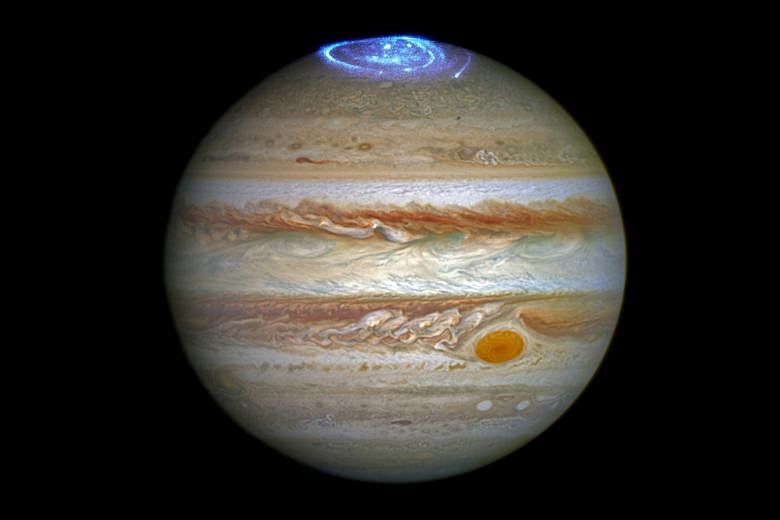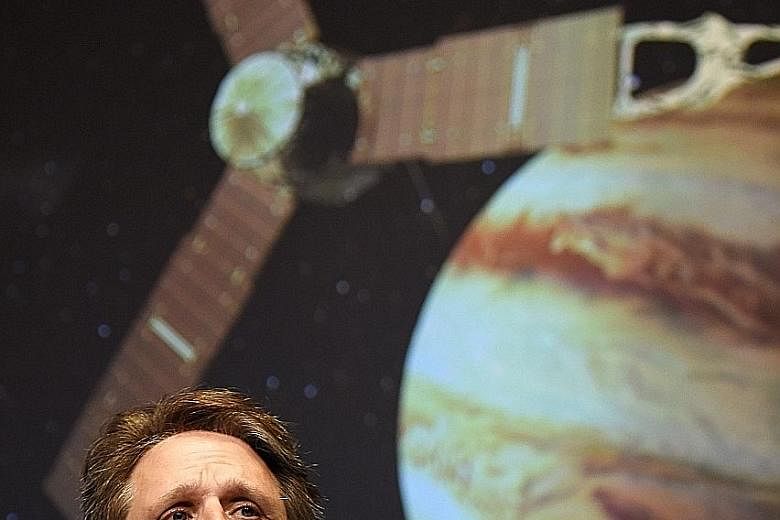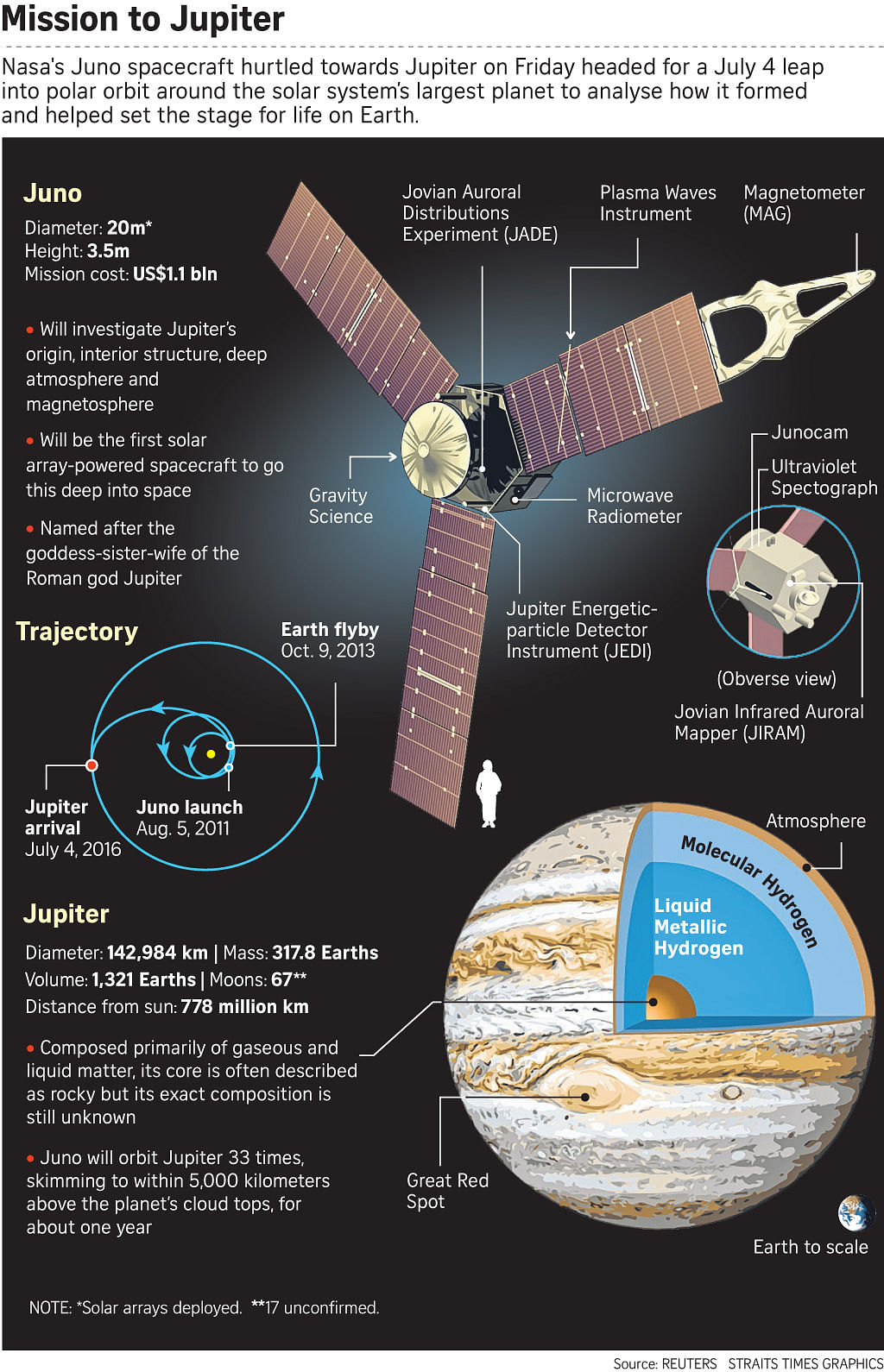MIAMI • Juno, an unmanned Nasa spacecraft, is barrelling towards Jupiter on a US$1.1 billion (S$1.5 billion) mission to circle the biggest planet in the solar system and shed new light on the origin of our planetary neighbourhood.
The solar-powered vehicle - about the size of a professional basketball court - should plunge through Jupiter's poisonous atmosphere today and tomorrow to begin orbiting for almost two years.
Jupiter is the fifth planet from the Sun. Its atmosphere is made up of hydrogen and helium and packed with so much radiation that it would be more than 1,000 times the lethal level for a human.
The gas giant is also enshrouded in the strongest magnetic field in the solar system. "Jupiter is a planet on steroids," said principal investigator Scott Bolton of the Southwest Research Institute in Texas. "Everything about it is extreme."
Jupiter is perhaps best known for its Great Red Spot, which is actually a massive storm, bigger than Earth, that has been roiling for hundreds of years.
The planet is marked by cold, windy clouds of ammonia and water that appear as reddish, brown and beige stripes and swirls.
Dr Steve Levin, Juno project scientist from Nasa's Jet Propulsion Laboratory, said water figures are the most important ones that Juno is going to bring back. "If Jupiter formed far from the Sun, where it is cold, out of blocks of ice... you would get a different amount of water inside Jupiter than if it formed closer to the Sun than it is now."
The spacecraft will rotate as it circles Jupiter, providing something like a three-dimensional CAT scan.
The spacecraft will study Jupiter's gravitational field, magnetic field and interior. The mission also aims to learn more about how solar wind influences auroras by studying the energetic particles that bombard the atmosphere on Jupiter and make it glow.
Juno is not the first spacecraft to orbit Jupiter but Nasa says its orbit will bring it closer than its predecessor, Galileo, launched in 1989. That spacecraft - after a fruitful 14-year mission during which it found evidence of subsurface saltwater on Jupiter's moons Europa, Ganymede and Callisto - made a death plunge into Jupiter in 2003.
Juno will get within 5,000km of Jupiter while dodging the highest radiation regions "by approaching over the north, dropping to an altitude below the planet's radiation belts... and then exiting over the south", the space agency said
But first the spacecraft must survive what Nasa has described as a "suspenseful orbit insertion manoeuvre", during which the main engine fires for 35 minutes in order to slow Juno down by about 542m per second so it can enter orbit.
If it does manage to orbit, Juno will circle the gas giant for 20 months. Nasa plans to brief reporters about the approach today.
Coinciding with Juno's approach towards Jupiter, Nasa has extended the missions of nine older robotic explorers that have lived beyond original expectations. It announced the decision last Friday, saying the nine are still producing bounties of observations for scientists. Most of the extensions were expected.
One of the explorers, the New Horizons spacecraft, which flew past Pluto last year, has already been steered towards a new target, known as 2014 MU69, one of the small icy objects in the ring of debris beyond Neptune.
But the decision to have the Dawn spacecraft continue to orbit Ceres, the dwarf planet in the asteroid belt, was somewhat of a surprise, as well as a disappointment to some working on the mission, who had hoped the spacecraft would be sent to a new destination.
The other missions extended include the Lunar Reconnaissance Orbiter and a flotilla of spacecraft at Mars: the Mars Reconnaissance Orbiter, the Mars Atmosphere and Volatile Evolution mission, the Mars Opportunity and Curiosity rovers and Nasa's support for the European Space Agency's Mars Express.
AGENCE FRANCE-PRESSE, NEW YORK TIMES



